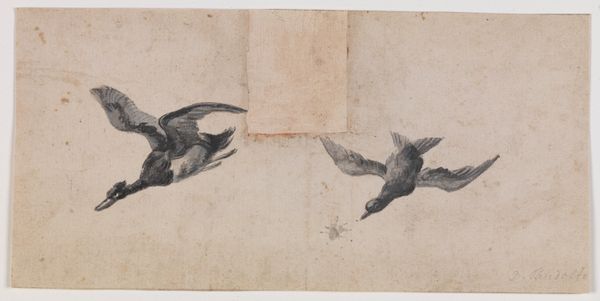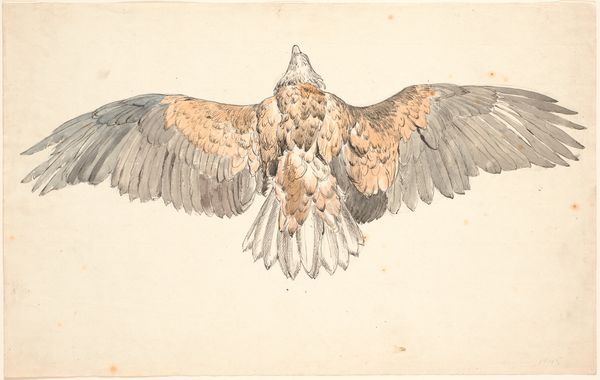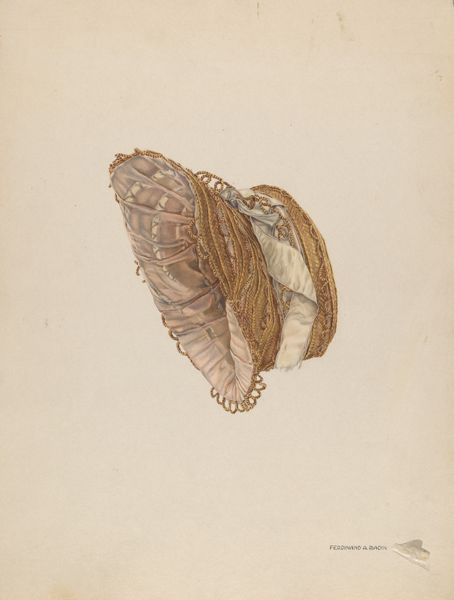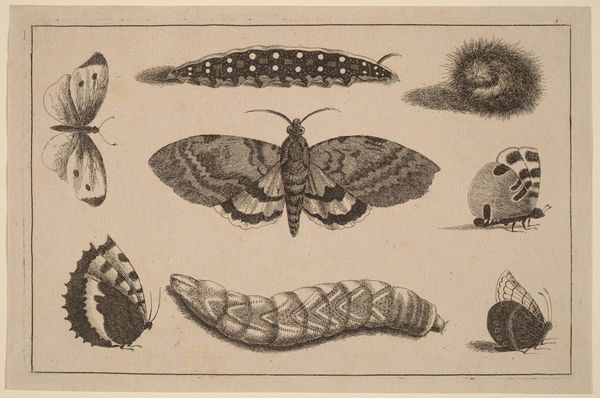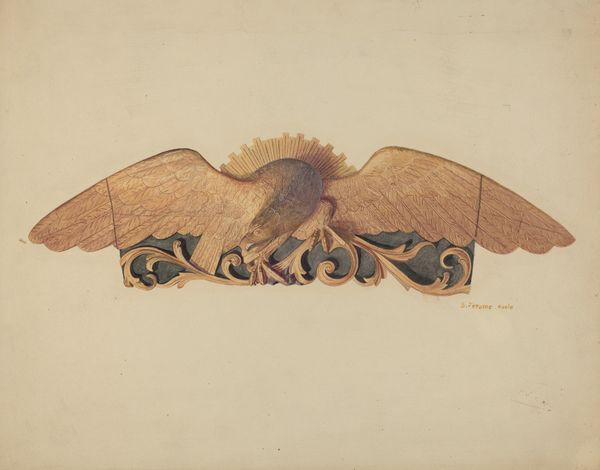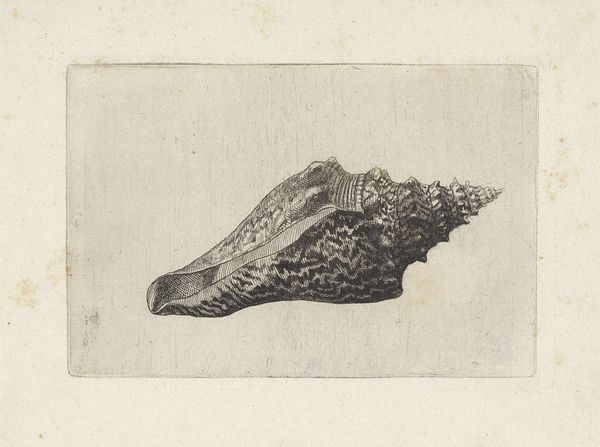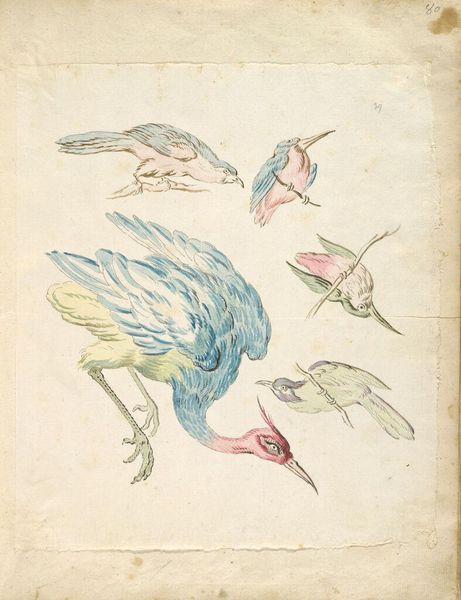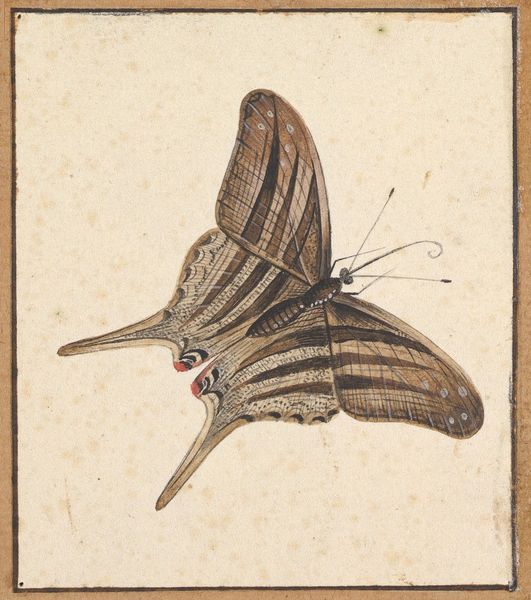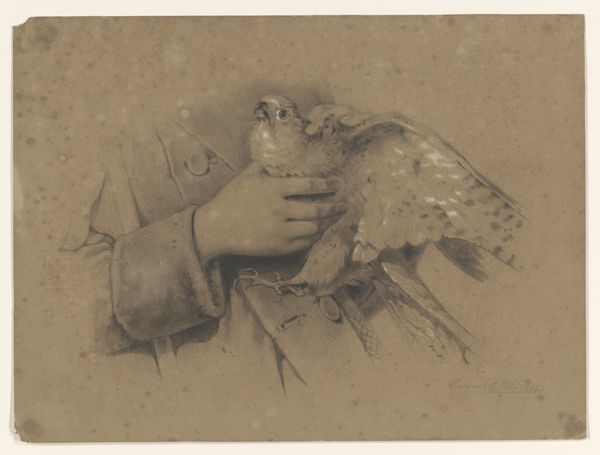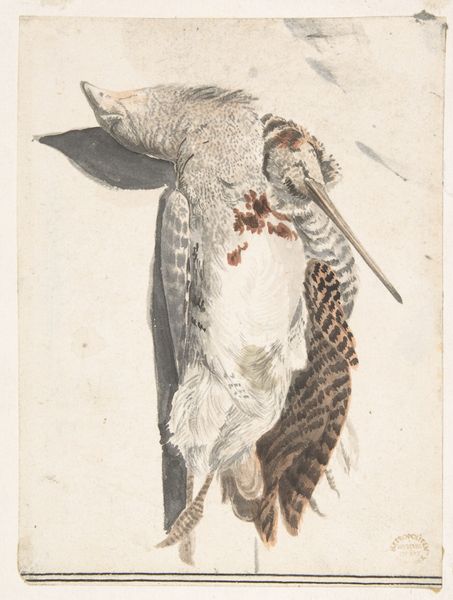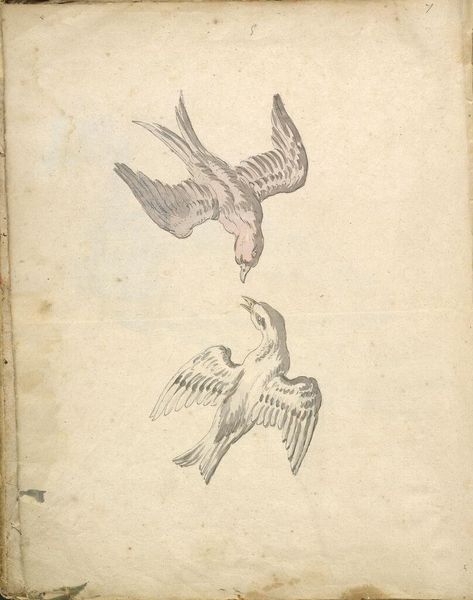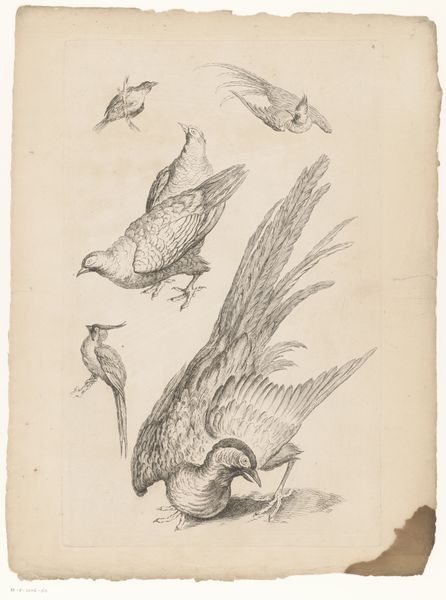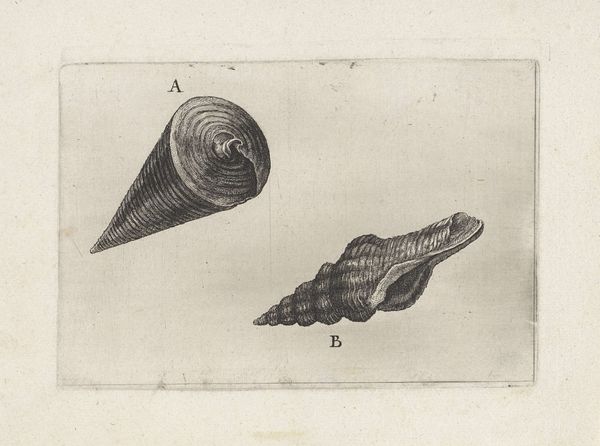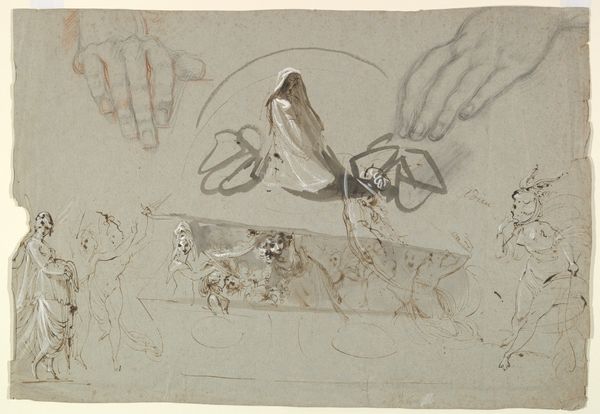
drawing, print, watercolor
#
drawing
# print
#
charcoal drawing
#
figuration
#
11_renaissance
#
watercolor
#
northern-renaissance
Dimensions: 4 1/2 x 5 1/8 in. (11.5 x 13.0 cm)
Copyright: Public Domain
Editor: Here we have Albrecht Dürer's "Bittern's Wings: study showing both sides," created in 1515. It appears to be a watercolor and charcoal drawing. I'm struck by its fragility; the wings feel delicate, almost like specimens pinned for observation. What do you see in this work? Curator: It’s more than just ornithological accuracy, isn’t it? Think about Dürer's context. The Renaissance saw a resurgence of interest in the natural world, yes, but also a fascination with symbolism. Wings, traditionally associated with angels, with transcendence. Editor: So, he's exploring earthly form as a path to the divine? Curator: Perhaps. But consider the fractured state of Christendom at the time, the stirrings of the Reformation. Doesn’t this fragmented depiction of wings—beautiful, yet detached from a body—speak to a certain spiritual unease? A questioning of established dogma? He dissects and presents these wings as if trying to comprehend the very mechanics of belief. How might the cultural disruption influence even anatomical studies of wings? Editor: I didn’t think about that, about Dürer almost dissecting religious themes! It gives such a new perspective. Curator: And it’s key to understanding Dürer's genius: embedding complex social commentaries within seemingly simple depictions of nature. Editor: I’m walking away realizing art always reflects much bigger sociopolitical landscapes! Curator: Indeed, and interrogating that connection provides the richest insights.
Comments
No comments
Be the first to comment and join the conversation on the ultimate creative platform.
